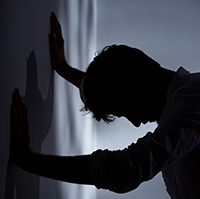We’ve long known that mental and physical health are inextricably linked. People living with mental illnesses are more likely to have poorer physical health than the general population; they are also more likely to have chronic preventable diseases and tend to die earlier. Yet despite their increased vulnerability, they are actually less likely to receive the care and support they need for their physical welfare.
Programs: Evidence Check
A fast and accurate summary of the latest health evidence.
The jobs that come with a higher suicide risk
Concerning rates of suicide are prevalent among farmers, construction workers, entertainers and other key occupations, according to a new Evidence Check published by the Sax Institute.
Managing withdrawal from drugs and alcohol: what works best?
With almost one in six Australians drinking at risky levels and 3.4 million of us reporting use of an illicit substance in 2019, it’s clear that dependence on alcohol and other drugs is a societal problem of huge dimensions.
Could better design reduce seclusion and restraint in mental health units?
The use of restraint and seclusion in managing people with mental health illnesses has a long and inglorious history, dating back to mediaeval times when those of “troubled mind” would often be placed in village stocks. Later, in the era of institutionalisation, mental asylums relied heavily on mechanical restraints, such as straightjackets and manacles, to exert control.
What is the evidence around masks and COVID-19 transmission?
Face masks – and whether the general public should wear them to stop the spread of COVID-19 – are a subject of much uncertainty and shifting advice. Just this month, the World Health Organisation reversed its previous position of not recommending their use. In the U.S., masks are recommended for asymptomatic people in public places where social distancing is hard to maintain, such as on public transport. But in Australia and New Zealand, they are not.
Virtual hospitals: a new way to ease healthcare burdens
The global COVID-19 pandemic has raised real concerns about how our health system can cope with dramatic spikes in use. Could an innovative ‘virtual hospital’ concept help ease the burden on our hospitals, in good times and bad?






